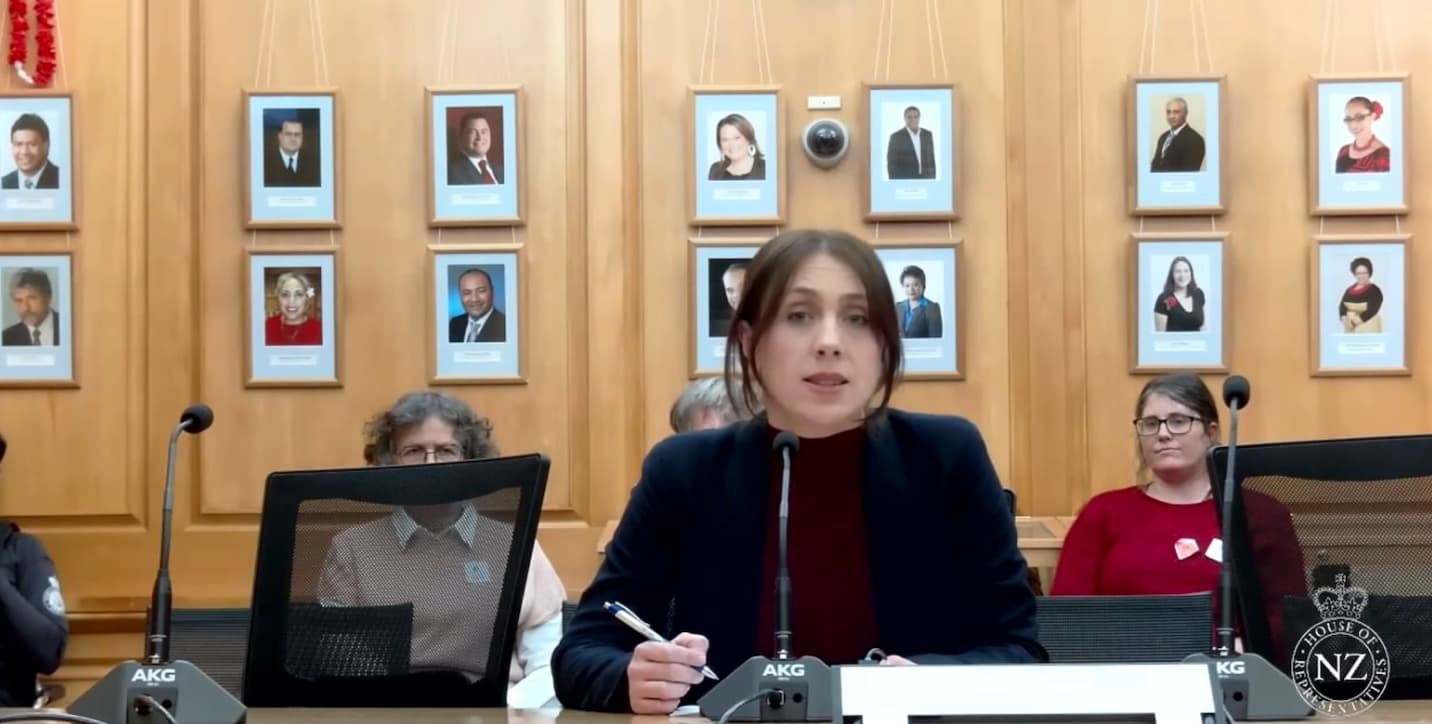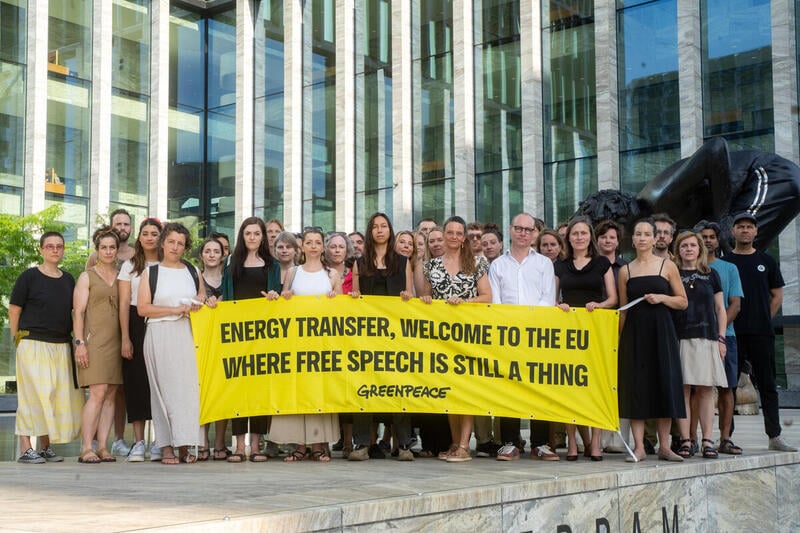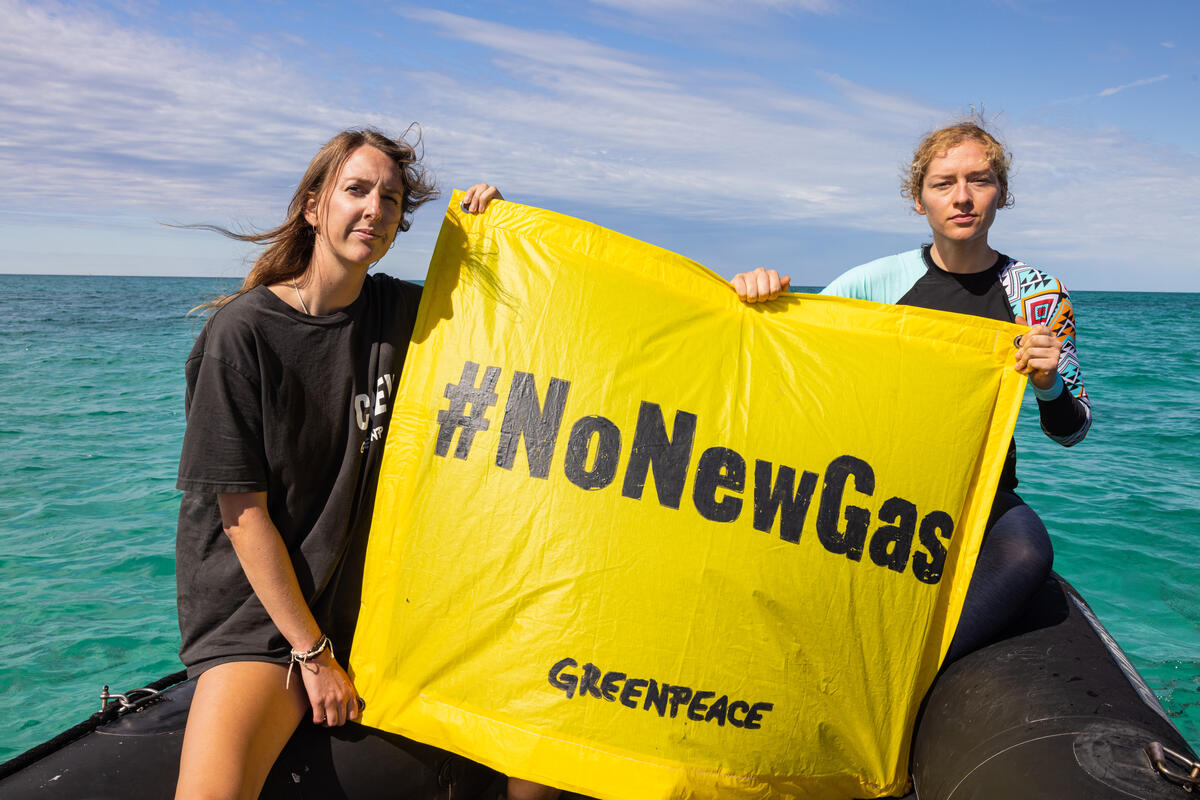Jenny Sahng gives us an inside look behind Climate Club, the weekly newsletter that shares high impact climate actions for busy people.
Climate Club was started by a group of friends, Jenny, Emily and Dhanya, who wanted to make it easier for everyday people to take action at the systemic (not individual) level.
At the core of Climate Club is a weekly email newsletter that distils what is happening in climate action both locally and worldwide. It provides ways to take action in five minutes, 15 minutes or 30 minutes.
Yet the Climate Club team is doing a whole lot more beyond the newsletter. They’re running events, leading workshops, making policy submissions and have run a couple of campaigns themselves.
When was the first moment when you wanted to do more for the environment?
Jenny: In my day job, I’m a data scientist at a small tech startup called Multitudes; but outside of work, I’m one of the co-founders of Climate Club and the media spokesperson for Vote for Climate 2023.
Climate change has been an issue that’s worried me ever since I watched An Inconvenient Truth, at the age of around 12. It’s been something weighing heavily on my mind ever since.
But it wasn’t until a few years ago that I got into activism. It was a time in my life when I had some spare time, and volunteering was something I’d always done, so as some projects wrapped up I thought ‘what’s next?’. And over those years, climate change had really come to the fore in urgency.
So I volunteered with the Fossil Free State Sector Coalition (FFSSC); Mindful Money, (which is an ethical investment charity); and then later on we started Climate Club.
How did you meet each other?
Dhanya and I went to uni together. I met Emily through another friend. Emily was already involved in the FFSSC, and she’d posted a draft submission guide advocating for a stronger Emissions Trading Scheme (ETS). I knew she also worked in tech, not climate, and it was fascinating to see someone take action on something so technical and policy-specific, even though they hadn’t studied it at uni or had worked in it full-time. I messaged her and asked, ‘Wow! How did you get involved in this?’.
She told me about the volunteering that she had been doing, and we had so much shared enthusiasm about wanting to get involved in climate action as newbies to the movement. Dhanya and I had been having similar thoughts, so the three of us all got together to share our experiences of being first time volunteers in the climate space.
What prompted you to start Climate Club?
We all know that the climate movement needs more people. The world needs all hands on deck to solve the climate crisis, which means that we should be making it as easy as possible for people to start getting involved.
However, as young professionals who weren’t working full time in sustainability, activism, or conservation, we found it hard to figure out the basics: what group to join, how to go about joining, and where our skills would be most needed. Because often climate organisations are often stretched on capacity, it becomes a chicken-or-egg problem: there is little time for outreach, PR, marketing, and onboarding to attract new volunteers when folks are busy doing the actual work of campaigning for systemic change.
What’s more, the environmental/climate movement can be a bit intimidating for newcomers. Some of the jargon that we use is quite unfamiliar, and the most visible actions (protests, stunts), while effective, might not feel very approachable for first timers.
We realised that to grow the movement, we couldn’t have small barriers tripping people up on their way through the door. We wanted to smooth the way for newcomers to get involved, to boost support and capacity for existing organisations and campaigns.
Why an email newsletter?
Emily, Dhanya, and I sat down for some strategy sessions to think through the problem we were trying to solve. All of us have worked in tech and product strategy, so we knew it was important to understand the problem rather than to solutionise too early. We framed the barriers that we had felt in trying to get involved (which were mostly small, but they add up) as a “customer problem”. It sounded something like this:
> “As a New Zealander who has never been involved in climate action but is worried about climate change, I want to know how I can contribute to climate action in a way that’s easy, approachable, and impactful”.
How might we help solve this problem for this target audience?
We realised that most people who are new to climate action are not going to dive right in and commit to regular hours every week in volunteering. They’re more likely to take a smaller first step, like signing a petition, or writing a submission, or writing an email to a representative on an issue that they can connect to their daily lives. But with the overwhelming wealth of information online these days, it’s hard to know which petitions are legit, which submissions are important, and what to write without being an expert on the subject.
After a couple of months of thinking this through, we realised that a weekly newsletter might be a good MVP solution to our problem. We could connect everyday folks to the great work that organisations are already doing, and focus on translating the different campaigns and policy-level to be clear and relatable to the everyday lives of first time climate activists.
From there, we would try to nudge subscribers into volunteering for a climate organisation that they align with regularly.
What do you know about your subscribers, your audience?
It’s very diverse, all ages from 15 to 80+, from all regions of New Zealand. Most important for us is that the people who read our newsletter are at all different stages along their climate journey. We definitely have lots of people who are already highly engaged in climate action, but we’re seeing more people who are more sort of ‘climate curious’ coming in.
We really want to foster that portion of our audience because they’re the ones that the rest of us need to welcome and embrace into the climate movement. That’s how we grow the movement across the country.
We try to keep in mind how the language around activism and climate change can be very new to people (see glossary below). When we write our newsletters we have to do a filter through and look for any jargon, or overly polarising language. We refer a lot to the Workshop’s guide and rules of thumb on how to communicate on climate change. We’re always open to feedback on this!
Even the word ‘activist’ is uncomfortable for some people. People don’t actually identify with being an activist until quite far down the track, even if they are already meeting the definition (just someone who’s acting for systemic, policy-level change!).
Do your subscribers send you requests? What do they want more of from Climate Club?
People email in with suggestions for actions and events coming up. We add it to our big list of actions and slot it in when it fits with what we’re trying to do that week.
It’s always great when a climate group or domain expert has already written a submission guide, and we can share it with a wider audience so folks are able to try their hand at a truly policy-level systemic action, with guidance and templated talking points.
A few people have asked for lifestyle actions in the newsletter, e.g. ‘what are some tips on how to reduce our personal carbon footprint?’. We could do that, but we want to keep the newsletter really tight and focused on systemic action. There are already many sustainability & lifestyle blogs out there that do a great job of this – check out Gen Less, Live Lightly, Save Our Happy Place.
We want to instead address the gap in how we can impact policy and systems, to make those lifestyle changes easier and more affordable for all.
Beyond the newsletter
We’re coming up to almost two years for the newsletter now, and we’ve been trying a lot of things!
We run workshops on understanding climate change, a “Climate Change 101” if you will, for schools, community groups, and workplaces. It’s a fun, interactive way to get into what actually causes climate change, introduce the science behind it, and actions you can take. We’ve even run this for regional councils – actual decision makers who have the power to turn our demands for climate action into reality!
We’ve also run civic engagement workshops on how to make your voice heard, which we delivered as part of the Climate Action Conference. It talks about the importance of participatory democracy, and why things like petitions, submissions, calling your councillor, writing to your MP, are important for collective change. My favourite bit of it is this 6 min video on how power works.
For the second year in a row, we’ve been part of the Auckland Climate Festival – last year we had a panel called “An evening of climate wins”, and this year it was about “turning climate anxiety into action.”
Finally, we’re collaborating on the Vote for Climate 2023 election campaign. The time for bold action is now, and we want to see everyone voting for a party that takes climate change seriously. Also, like we did for the 2022 Local Elections, we’ve made a 2023 General Election Guide compiling everything folks need to know about how to vote for climate action.
Campaign success
It’s always been part of our kaupapa to make it easier for people to write a submission, whether that’s through email templates, providing examples from climate organisations who have experts in the domain, or compiling submission guides. For example, one of our first submission guides was for the first draft emissions reduction plan, where we compiled submissions from 30+ organisations and put them all in one place.
But this year, we tried our hand at campaigning for change ourselves. Emily, who is our resident expert on the ETS, noticed that a new clause had been added to a bill which would have created a loophole to give companies more carbon credits to pollute. This is obviously unacceptable.
We turned our submission for closing this major loophole into an online petition, in collaboration with Coal Action Network Aotearoa and with consultation from ETS experts. This made it easy for anyone to support these technical demands . Over 3000 people signed on, and we took their names to the Select Committee to talk about it. In the end, we s쳮ded in closing the loophole!
The ETS is a classic case. Submissions on the ETS are often very specific and technically worded, so it’s hard for people to participate in the decisions that will impact us all. We want Climate Club to bridge that knowledge gap.
What’s next for Climate Club?
We already collaborate with a lot of different groups, but one of our aims this year is to engage with different communities that aren’t traditionally linked to climate activism.
These might be ethnic/migrant communities, unions, women’s organisations, rainbow communities, outdoor/sports groups, churches, schools, universities. These communities might not see themselves as “climate organisations”, but many of them align with the fairer, equitable, and safe climate future that we want to see. The climate crisis is going to impact everything, so really, we are all on the same side. We’d love to be part of broadening the climate movement, so we can approach this challenge from a multitudes of perspectives.
You’re online a lot I imagine – how do you connect to nature?
It’s a tough balance! But in my day-to-day, I ride my bike everywhere. My daily work commute really helps to give my brain a reset. I love seeing the sky with all its colours and feeling the fresh air on my face.
What is the first rule of Climate Club anyway?
(I haven’t actually watched Fight Club but) I’d say the first rule of Climate Club is to always talk to friends & whānau about Climate Club!
Glossary
- Activism & activist
- Activism can be just showing up to change the status quo for the better – if enough people show up, we can change things.
- Individual action might be part of activism, but it also includes bigger pressure-building movements that ensures political action happens.
- Direct action is a tactic which is when you do something that stops another activity, for example a polluting activity.
- Civil disobedience is another well-known kind of peaceful action that breaks a rule or a law in the process.
- Activists are people who ‘show up’.
- Climate action
- Doing the things that will lead to a reduction in greenhouse emissions.
- Climate justice
- Reducing greenhouse emissions while also acknowledging the fact that the people and countries who have contributed the least to climate change will be the ones who are harmed the most for it (e.g. countries in Africa, Pacific Islands, Latin America, most of Asia).
- Truly acknowledging this means also compensating these countries for the loss & damage that our overconsumption (and therefore over-emitting) has caused.
- Climate activism
- Showing up to demand, prompt or impel climate action.
- Climate movement
- A description of people and groups who are taking part in climate activism. A movement doesn’t have a clear membership and is not an official group, but instead describes a collective that is growing in numbers or impact.
- Engagement
- We can describe people as ‘engaged’ when they’re following a topic, learning, seeking out information about that topic, and acting on that.
- ETS: Emissions Trading Scheme
- The ETS is New Zealand’s pricing mechanism of emissions. In theory, it’s meant to be the means for the country as a whole, across public and private sectors to reduce those emissions. It’s a bit like a stock exchange for polluting, by pricing that pollution to be able to limit it.
- Systemic action
- Environmental problems are mostly caused and made worse by the way we do things collectively, not individually.
- For example, a person might choose to drive a fossil fuel car because previous governments, lobbied by fossil fuel companies, chose to expand urban sprawl, invest in motorways, and defund cycle lanes and public transport so it’s less reliable. Car companies pay for advertising to romanticise personal car travel and make it seem more desirable or cool. Because the whole system is giving advantages to car-users, individuals might find it hard to drive less. It requires the whole system to change (‘systemic change”) for individuals to shift behaviour en masse.
- Taking systemic action means trying to change the policies and political choices, so that it’s easy and affordable for individuals to make sustainable choices. E.g. rather than trying to stop one person from driving, pressuring the local council to invest in a better public transport system which makes taking the bus not only the sustainable option, but also the fastest, cheapest, and most reliable.
Check out: Why does Climate Club focus on collective & systemic actions?



